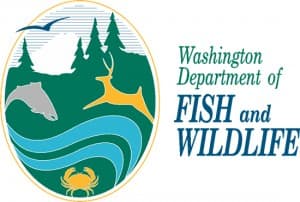Washington State Marks 75th Anniversary of Federal Wildlife Restoration Law
OutdoorHub 09.04.12

Sunday (Sept. 2) marks the 75th anniversary of a federal law that helps Washington State manage wildlife, purchase habitat, and educate thousands of hunters every year.
Governor Chris Gregoire and Phil Anderson, director of the Washington Department of Fish and Wildlife, said the Federal Aid in Wildlife Restoration Act, signed by President Franklin Roosevelt in 1937, has provided Washington State with millions of dollars to support wildlife conservation and hunter education initiatives.
The law is better known as the Pittman-Robertson Act after its prime sponsors, U.S. Sen. Key Pittman of Nevada and U.S. Rep. A. Willis Robertson of Virginia. Congress and the President enacted the measure at the urging of organized outdoor groups, state wildlife agencies, and the firearms and ammunition industries. It extended an existing 11-percent excise tax on sport hunting ammunition and firearms and earmarked the proceeds for state investments in wildlife conservation. In recent years Washington has received about $7 million annually in Pittman-Robertson funds in the form of grants from the U.S. Fish and Wildlife Service.
“The Pittman-Robertson Act is one of the most significant wildlife conservation measures in U.S. history,” said Gov. Chris Gregoire, who recently led the “Get Out West” outdoor recreation initiative as chair of the Western Governors Association. “I commend the role of hunters and recreational shooting enthusiasts in contributing to the sound management of wildlife and critical habitat in Washington and across the West.”
Anderson said the state uses Pittman-Robertson funds to sustainably manage nearly 50 game species and educate about 13,000 new hunters each year. The state’s first land purchase, in 1939, enabled it to establish the Sinlahekin Wildlife Area in north-central Washington. In all, Washington has used Pittman-Robertson grants to buy more than 150,000 acres of land for wildlife conservation.
“These lands provide year-round access for outdoor enthusiasts, economic benefits for local communities, and critical habitat for deer, elk, waterfowl, upland birds, fish and nongame species,” Anderson said.

